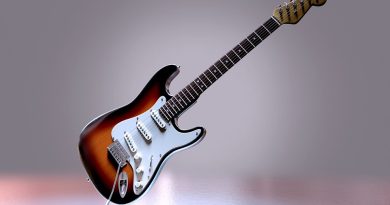Mastering Classical Guitar Chords: A Comprehensive Guide for Beginners
Mastering Classical Guitar Chords: A Comprehensive Guide for Beginners
Introduction
Learning how to play classical guitar chords is an essential skill for any guitarist looking to master the art of playing this beautiful instrument. Chords are the building blocks of music, and mastering them will allow you to play a wide variety of songs and styles. In this comprehensive guide, we will cover everything you need to know to start mastering classical guitar chords as a beginner.
Understanding Chord Basics
Before we dive into specific chord shapes and fingerings, it is important to understand the basics of chords. A chord is a group of three or more notes played together to create harmony. In classical guitar music, chords are typically played by fingerpicking individual notes rather than strumming with a pick.
Types of Chords
There are several types of chords that you will encounter when playing classical guitar, including major, minor, dominant, augmented, and diminished chords. Each type of chord has a unique sound and can be used to create different moods in your music.
Major Chords
Major chords are some of the most commonly used chords in music. They have a bright and happy sound and are often used in uplifting and joyful songs. Major chords are typically made up of the root, third, and fifth notes of a major scale.
Minor Chords
Minor chords have a more somber and melancholic sound compared to major chords. They are made up of the root, minor third, and fifth notes of a minor scale. Minor chords are commonly used in sad or emotional songs.
Dominant Chords
Dominant chords have a strong and powerful sound and are commonly used in jazz and blues music. They are made up of the root, major third, fifth, and minor seventh notes of a major scale.
Augmented and Diminished Chords
Augmented and diminished chords are less commonly used in classical guitar music but can add interesting and unique harmonic colors to your playing. Augmented chords are created by raising the fifth note of a major chord, while diminished chords are created by lowering the fifth note of a minor chord.
Common Classical Guitar Chord Shapes
Now that you have a better understanding of the different types of chords, let’s dive into some common classical guitar chord shapes that you will encounter as a beginner.
E Major Chord
The E major chord is a staple chord in classical guitar music. To play this chord, place your index finger on the first fret of the third string, your middle finger on the second fret of the fifth string, and your ring finger on the second fret of the fourth string. Strum the bottom six strings to play the E major chord.
A Minor Chord
The A minor chord is another essential chord for classical guitarists. To play this chord, place your index finger on the first fret of the second string and your middle finger on the second fret of the fourth string. Strum the bottom five strings to play the A minor chord.
D Major Chord
The D major chord is a versatile chord that is used in many classical guitar pieces. To play this chord, place your index finger on the second fret of the third string, your middle finger on the second fret of the first string, and your ring finger on the third fret of the second string. Strum the bottom four strings to play the D major chord.
G Major Chord
The G major chord is a challenging chord for beginners due to its finger stretch. To play this chord, place your index finger on the second fret of the fifth string, your middle finger on the third fret of the sixth string, and your ring finger on the third fret of the first string. Strum the bottom six strings to play the G major chord.
Practice Tips for Mastering Classical Guitar Chords
Now that you have learned some common classical guitar chord shapes, it is important to practice regularly to master them. Here are some practice tips to help you improve your chord-playing skills:
1. Start slow and focus on accuracy – It is better to play a chord slowly and accurately than to rush through it and make mistakes. Practice each chord shape slowly and make sure each note rings out clearly.
2. Use a metronome – Practicing with a metronome can help you improve your timing and rhythm. Start by playing each chord shape at a slow tempo and gradually increase the speed as you become more comfortable.
3. Practice transitions between chords – One of the most challenging aspects of playing chords on the guitar is transitioning between them smoothly. Practice transitioning between different chord shapes to improve your muscle memory and finger dexterity.
4. Experiment with different fingerings – While there are standard fingerings for each chord shape, feel free to experiment with different fingerings to find what works best for you. As long as you are playing the correct notes, there is no right or wrong way to finger a chord.
5. Play along with backing tracks – Playing along with backing tracks can help you develop your ear and improve your ability to play chords in a musical context. Look for backing tracks in different keys and styles to challenge yourself and expand your chord repertoire.
Conclusion
Mastering classical guitar chords is a fundamental skill that every guitarist should strive to achieve. By understanding the basics of chords, learning common chord shapes, and practicing regularly, you can improve your chord-playing skills and become a more versatile and expressive guitarist. Remember to be patient and persistent in your practice, and don’t be afraid to seek guidance from a guitar teacher or mentor. With dedication and practice, you will be well on your way to mastering classical guitar chords and becoming a proficient guitarist.






